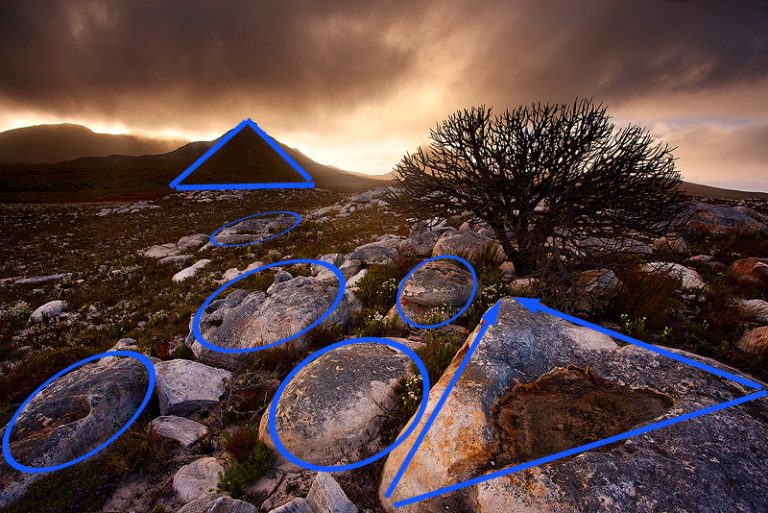How Do Geometry Transformations Work?

Understanding shapes, patterns, and their interactions requires an understanding of geometry transformations, which are basic ideas in mathematics. They enable systematic manipulation and analysis of geometric figures. Transformations are crucial tools in many fields, such as computer graphics, engineering, physics, and architecture, and can range from straightforward translations to intricate combinations.How Do Geometry Transformations Work?

This article explores the various kinds, characteristics, and uses of geometry transformations, elucidating their operation and significance.How Do Geometry Transformations Work?

What Are Geometry Transformations?
The movement or modification of a shape on a plane or in space while following certain guidelines is known as a geometry transformation. Mapping points from one location to another is the fundamental component of a transformation. Certain characteristics, such size, form, orientation, or position, are maintained or altered by these actions.How Do Geometry Transformations Work?
In general, transformations fall into one of two categories:How Do Geometry Transformations Work?
- Rigid Transformations (Isometries):These preserve the shape and size of the figure. Examples include translation, rotation, and reflection.
- Non-Rigid Transformations:These alter the shape or size of the figure. Examples include scaling (dilation) and shear.v
Types of Geometry Transformations
Translation
A figure can be translated by sliding it from one location to another without changing its size, shape, or orientation.
- How It Works:The figure’s points are all moved in the same direction and by the same amount.
- Mathematical Representation:A point (𝑥, 𝑦) (x,y) becomes (𝑥 + 𝑎, 𝑦 + 𝑏) (x+a,y+b) if it is translated by (𝑎, 𝑏) (a,b).
- Example:All of a square’s vertices shift when it is moved three units up and five units to the right.
Rotation
A figure is rotated by a certain angle around a fixed point, known as the center of rotation.
- How It Works:Every point on the diagram revolves around the center at the same angle.
- Key Parameters:
- Center of Rotation:the fixed point that the figure revolves around.
- Angle of Rotation:The turn’s degree, expressed in radians or degrees.
- Direction:either counterclockwise or clockwise.
- Example:The coordinates of a triangle’s vertices change as it is rotated 90 degrees counterclockwise around the origin.

Reflection
In order to produce a mirror image, reflection flips a figure over a line, known as the line of reflection.
- How It Works:Every point in the figure is mapped to a point on the other side of the line of reflection, but equally spaced from it.
- Mathematical Representation:
- Crossing the x-axis with reflection: (𝑥, 𝑦) →(𝑥, 𝑦) →(x,y)→(x,−y)
- Reflection across the yyy-axis: (x,y)→(−x,y)(x, y)
- Reflection across y=xy = xy=x: (x,y)→(y,x)(x, y) \to (y, x)(x,y)→(y,x)
- Example:A pentagon’s orientation is reversed when it is reflected across the y-axis.
Dilation
Dilation alters a figure’s size without affecting its shape.
- How It Works:A scale factor causes each point in the figure to move either closer or farther from a fixed location, known as the center of dilatation.
- Mathematical Representation
- After a scale factor k dilates a point (𝑥,𝑦) (x,y), its new location is (𝑘𝑥,𝑘𝑦) (kx,ky).
- Example:A circle’s radius doubles when it is scaled by a factor of two.
5.Shear
A figure is skewn by shear, which causes its shape to compress or stretch in a certain direction.
- How It Works:The graphic appears tilted because points move parallel to one axis.
- Mathematical Representation:
- Shear horizontally: (x,y)→(x+ky,y) →(x,t,t)→(x,y)
- Shear vertically:(𝑥,𝑦) → (𝑥,𝑦 + 𝑘𝑥)
- Example:A horizontal shear transforms a square into a parallelogram.
Properties of Geometry Transformations
Preservation of Properties
- Rigid Transformations:
- Maintain congruence, angles, and distance.
- produce numbers that are consistent with the original.
- Non-Rigid Transformations:
- Dilation preserves resemblance, for example, but may change size while maintaining proportional relationships.
Compositions of Transformations
Complex outcomes can be obtained by combining transformations. For instance:
- A glide reflection is a reflection that is followed by a translation.
- Complex patterns are produced by repeatedly rotating around various centers.

Inverses of Transformations
Every change has an opposite that undoes its impact:
- Translation:Move back the same amount.
- Rotation:Rotate in the other direction.
- Reflection:Over the same line, reflect once more.
- Dilation:Scale using the scale factor’s reciprocal.
Applications of Geometry Transformations
1. Computer Graphics
Animation, 3D modeling, and rendering all make considerable use of transformations. Translations and rotations aid in simulating realistic motion.

2. Engineering and Design
Transformations are used in mechanical engineering to investigate material stresses and strains. They are used for precise modeling in CAD software.

3. Physics
Transformations, like scaling in quantum physics or rotating celestial planets, represent motion and changes in physical systems.

4. Art and Architecture
Patterns and designs are inspired by transformations, as seen in symmetrical buildings, mosaics, and tiling.

Conclusion
Strong tools for exposing a shape’s underlying structure and symmetry are geometry transformations. These operations, which include shifting, rotating, reflecting, and scaling, help us better understand geometry and its practical uses. Gaining proficiency in transformations enables us to investigate the beauty of mathematical patterns, solve problems, and make creations.



